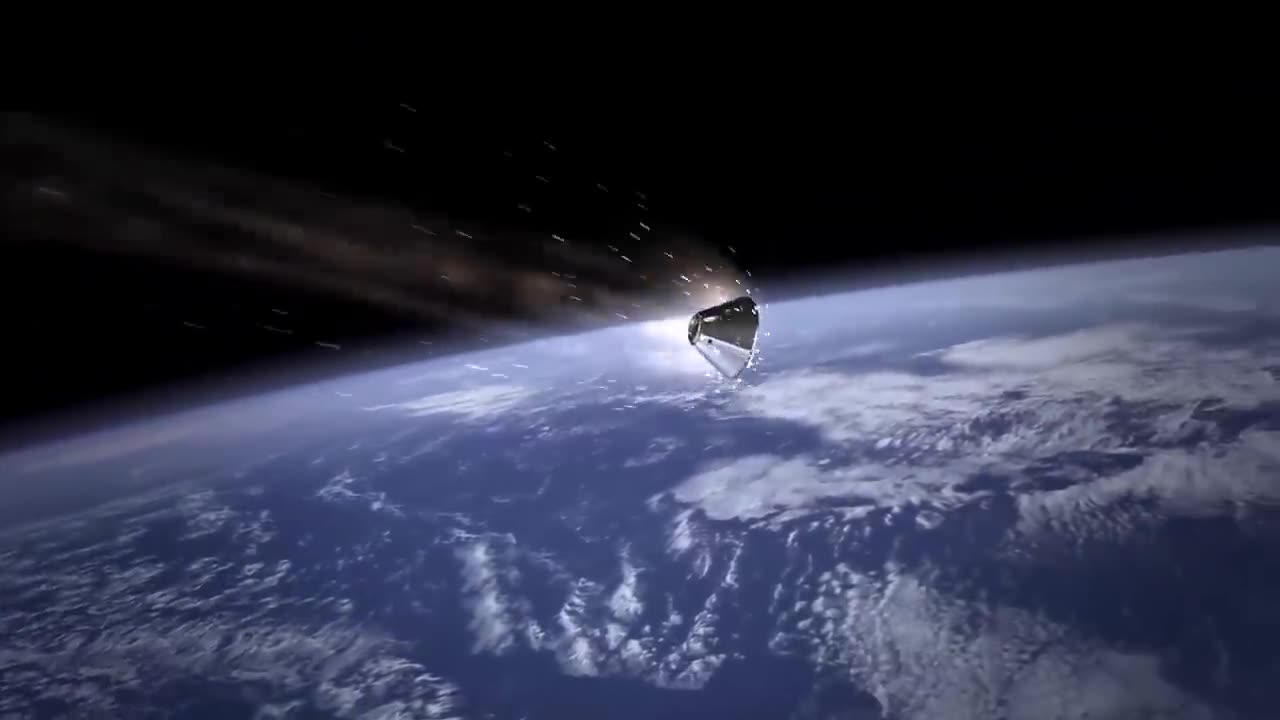Premium Only Content

How Do Spacecraft Slow Down? We Asked a NASA Technologist//dxbduba1
Spacecraft slow down in space by using various methods and propulsion systems, depending on their mission objectives and the specific phase of their journey. I'll outline some of the common methods:
Rocket Engine Firing: This is the most straightforward way to slow down a spacecraft. By firing its rocket engines in the opposite direction of its velocity, a spacecraft can decrease its speed. The principle is based on Newton's third law of motion: for every action, there is an equal and opposite reaction. The expelled exhaust gas from the rocket engines provides the thrust needed to slow down the spacecraft.
Aerobraking: For missions that involve entering a planet's or moon's atmosphere, aerobraking is used. The spacecraft dips into the atmosphere at a specific angle, using the planet's atmosphere to slow it down. The friction between the spacecraft and the atmosphere generates drag, reducing the spacecraft's speed.
Gravity Assists: In some cases, spacecraft can use the gravity of a celestial body to change their trajectory and speed. By performing a gravity assist maneuver, a spacecraft can gain or lose velocity, depending on the direction of the gravity assist. This technique is often used to save fuel or increase a spacecraft's speed.
Ion Propulsion: Ion propulsion systems are more efficient than traditional chemical rocket engines and are often used for deep-space missions. These engines continuously expel ions at high speeds, creating thrust and gradually slowing down the spacecraft.
Tethers: Electrodynamic tethers can be deployed in space to interact with a planet's magnetic field. By generating an electrical current through the tether, the spacecraft can create magnetic forces that act as a brake, slowing it down.
Orbital Mechanics: Spacecraft can use precise orbital mechanics to alter their speed and trajectory. For example, by changing their orbit's shape or inclination, they can adjust their speed relative to a target body.
Ballooning: In the case of missions involving atmospheres with extremely low densities, such as Venus, some spacecraft have used inflatable balloons or aerodynamic devices to slow down and navigate.
The specific method chosen depends on the spacecraft's design, its mission profile, and the celestial body it is targeting. NASA and other space agencies carefully plan and execute these maneuvers to achieve their mission objectives while conserving fuel and energy whenever possible.
-
 DVR
DVR
Badlands Media
18 hours agoAltered State S3 Ep. 46
34.9K4 -
 9:18
9:18
ARFCOM News
8 hours ago $0.85 earnedNSSF "Celebrates" ATF Partnership | Glocks BANNED | Redundant Spooky Boi Ban
16.6K8 -

LFA TV
16 hours agoLFA TV ALL DAY STREAM - WEDNESDAY 9/17/25
291K60 -
 1:00:00
1:00:00
BEK TV
1 day agoAPRIL LUND: FAITH, FOCUS, AND THE ROAD TO THE 2028 OLYMPIC MARATHON
15.1K -
 37:15
37:15
Stephen Gardner
3 hours ago🔥Trump ERUPTS After Obama’s Charlie Kirk Comments!
26.9K55 -

Total Horse Channel
14 hours ago2025 WDAA Western Dressage World Championship Show | Day Two | Arena One
21.7K -
 1:14:40
1:14:40
Glenn Greenwald
4 hours agoThe Right Wages Its Own Cancel Culture War: Lee Fang, Thomas Chatterton Williams, and Leighton Woodhouse on the State of Civil Discourse and More | SYSTEM UPDATE #517
164K64 -
 1:03:04
1:03:04
BonginoReport
6 hours agoBomb Squad Investigates Package at TPUSA HQ - Nightly Scroll w/ Hayley Caronia (Ep.136)
201K83 -
 1:23:11
1:23:11
Kim Iversen
7 hours agoDennis Kucinich Exposes 9/11 Israel's Lies
109K225 -
 2:02:51
2:02:51
The Mike Schwartz Show
6 hours agoTHE MIKE SCHWARTZ SHOW with DR. MICHAEL J SCHWARTZ 09-17-2025
40.1K5